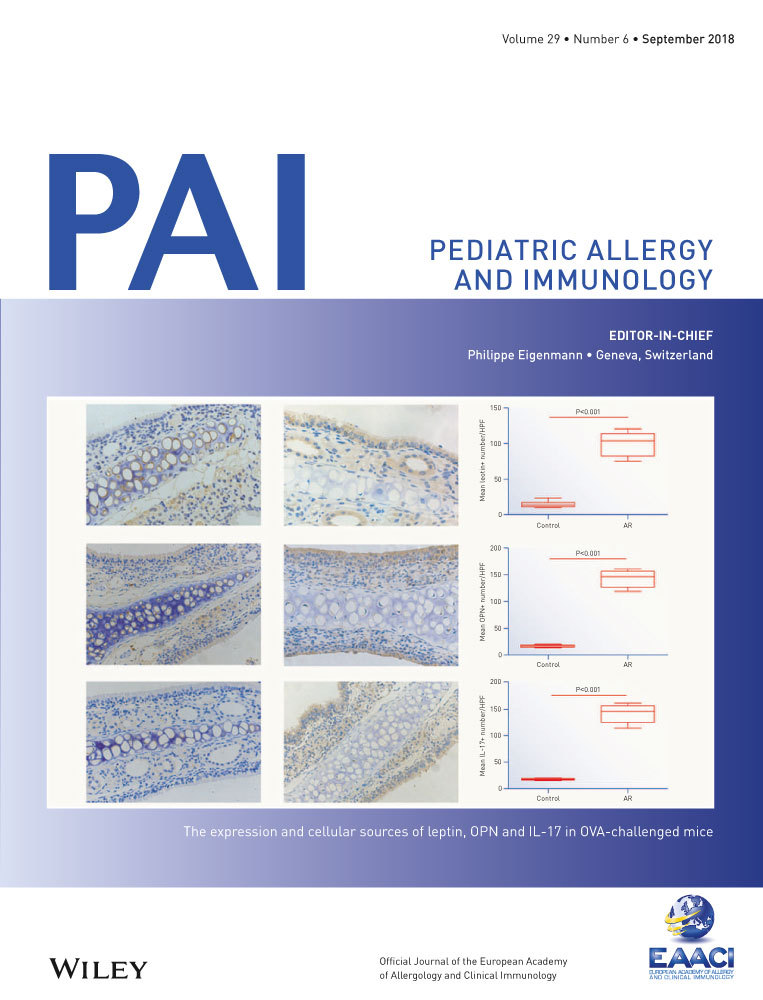Influence of genetic variants on childhood lung function – The Generation R Study
Funding information
The Generation R Study is made possible by financial support from the Erasmus Medical Centre, Rotterdam, the Erasmus University Rotterdam, and the Netherlands Organization for Health Research and Development. Dr Vincent Jaddoe received grants from the Netherlands Organization for Health Research and Development (ZonMw-VIDI 016.136.361) and the European Research Council (ERC-2014-CoG-64916). Dr Janine Felix has received funding from the European Union's Horizon 2020 research and innovation program under grant agreement no. 633595 (DynaHEALTH). Dr Liesbeth Duijts received funding from the co-funded program ERA-Net on Biomarkers for Nutrition and Health (ERA HDHL) (ALPHABET project, Horizon 2020 (grant agreement no. 696295; 2017), ZonMW, the Netherlands (no 529051014; 2017)). The researchers are independent of the funders. The Generation R Study received funding from the European Union's Horizon 2020 research and innovation program (733206, LIFECYCLE). The study sponsors had no role in the study design, data analysis, interpretation of data, or writing of this report.
Abstract
Genetic variants associated with adult lung function could already exert the effects on childhood lung function. We aimed to examine the associations of adult lung function-related genetic variants with childhood lung function and asthma, and whether these associations were modified by atopic predisposition, tobacco smoke exposure, or early growth characteristics. In a population-based prospective cohort study among 3347 children, we selected 7 and 20 single nucleotide polymorphisms (SNPs) associated with adult forced expiratory volume in 1 second (FEV1) and FEV1/forced vital capacity (FEV1/FVC), respectively. Weighted genetic risk scores (GRSs) for FEV1 and FEV1/FVC were constructed. At age 10, FEV1, FVC, FEV1/FVC, forced expiratory flow between 25% and 75% (FEF25-75), and forced expiratory flow at 75% (FEF75) of FVC were measured, and information on asthma was obtained by parental-reported questionnaires. The FEV1-GRS was associated with lower childhood FEV1, FEV1/FVC, and FEF75 (Z-score (95% CI): −0.03 (−0.05, −0.01), −0.03 (−0.05, −0.01), and −0.04 (−0.05, −0.01), respectively, per additional risk allele). The FEV1/FVC-GRS was associated with lower childhood FEV1/FVC and FEF75 (Z-score (95% CI): −0.04 (−0.05, −0.03) and −0.03 (−0.05, −0.02), respectively, per additional risk allele). Effect estimates of FEV1-GRS with FEF25-75, FEV1, FEF75, and FVC, and of FEV1/FVC-GRS with FEV1/FVC and FEF25-75 were stronger among children exposed to non-atopic mothers, smoking during pregnancy or in childhood, or those born with a lower birthweight, respectively (P-values for interaction < .05). Genetic risk scores were not associated with asthma. Adult lung function-related genetic variants were associated with childhood lung function. Maternal atopy, smoking during pregnancy or in childhood, and birthweight modified the observed effects.
CONFLICT OF INTEREST
The authors declare that they have no conflict of interest.




